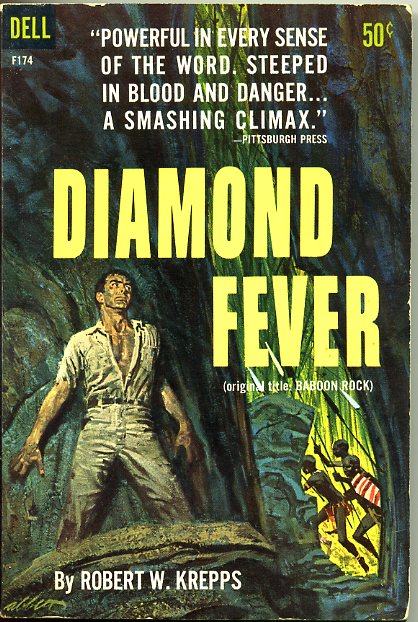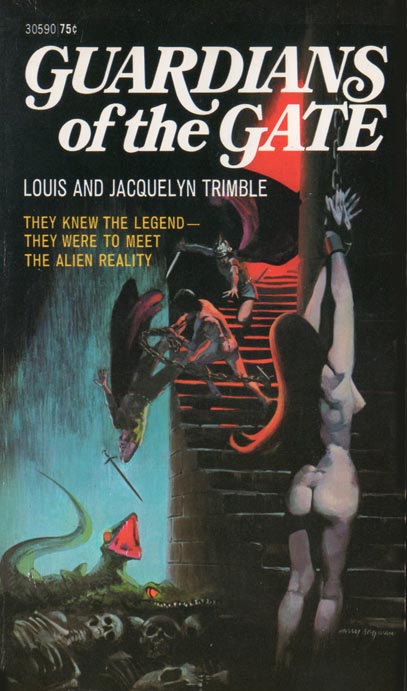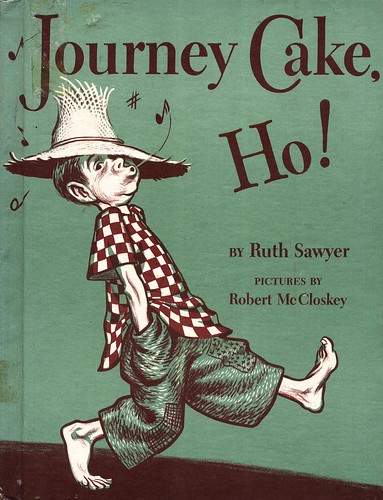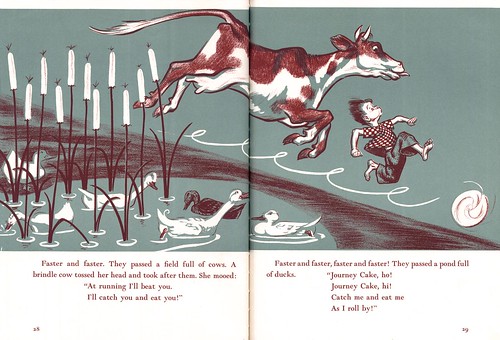The Bu$ine$$ of Illu$tration: Books
"Book publishers offer a considerable market for jacket designs (in the case of paperback books, cover designs), illustrations, and artwork for their advertising," wrote Fred C. Rodewald in the October 1954 issue of American Artist magazine.
"Prices vary somewhat with different publishers. One practice that may cause an artist trouble is that of offering an over-all fixed price for a jacket or book illustration regardless of its complexity or the amount of preliminary work required."
"There is considerable prestige and publicity in bookjacket and book-illustration work, particularly the latter, because the title page of the book gives credit to the artist. Artists should always sign jackets, and many publishers repeat the artist's name on the jacket's inside flap."

Recently, Mitchell Hooks explained to us that paperback covers went for about $300 when he began doing them in the early 50's and that as a member of the Graphic Artists Guild he worked to encourage publishers to pay better rates. After a few years, the average cover was going for $800.
Harry Borgman, who painted the cover below, told me the following from his own experience illustrating book covers:
"I did a few paperbacks from 1965 to 1973, probably a total of 12 or 15. For most of them I was paid $900, the first ones were a bit lower."

This is not an area I have any experience with, so I asked my friend René Milot how much he has been paid in recent years for book covers. René tells me that he has received as much as $5,000 for a cover from a major publisher... but that price has actually dropped in the last few years. $2,500 to $3,500 is now more typical, as publishers, like all purveyors of 'analog' media, struggle with diminished markets in a digital world. Still, compared to other traditional areas of illustration, I'd say that not only do books remain a safe-haven for literal, painterly illustrators, they also seem to pay relatively well.
Children's book publishing is another market that seems to continue to provide opportunities for the artist. While financial success in children's books can be hit-and-miss, those shortcomings might be offset by the potential for personal expression and artistic experimentation.
Rodewald writes, "Very frequently, especially in the case of children's books, a publisher will offer the artist a share of the royalties on the book. A contract also provides for an advance against royalties ranging from a few to several hundred dollars, depending on the estimated sales of the book."

"The royalty is based on a percentage of the wholesale price of the book, and of this the artist will get his percentage, which varies depending on the arrangement between the author and artist. Sometimes, when the art work in a children's book is as essential as the text, the artist is viewed as a collaborator, and the royalty rate is split between artist and author on equal or near equal terms."

"The rates of royalties in book work, as well as flat fees, differ widely from case to case, and each must be judged on its merits."
*Once again I must sing the praises of 5m@5hYdez, whose paperback cover archives are a visual feast the likes of which cannot be found anywhere else on the internet.
* Thanks also to Harry Borgman and René Milot for providing information for this post.
Source : http://todaysinspiration.blogspot.com















































